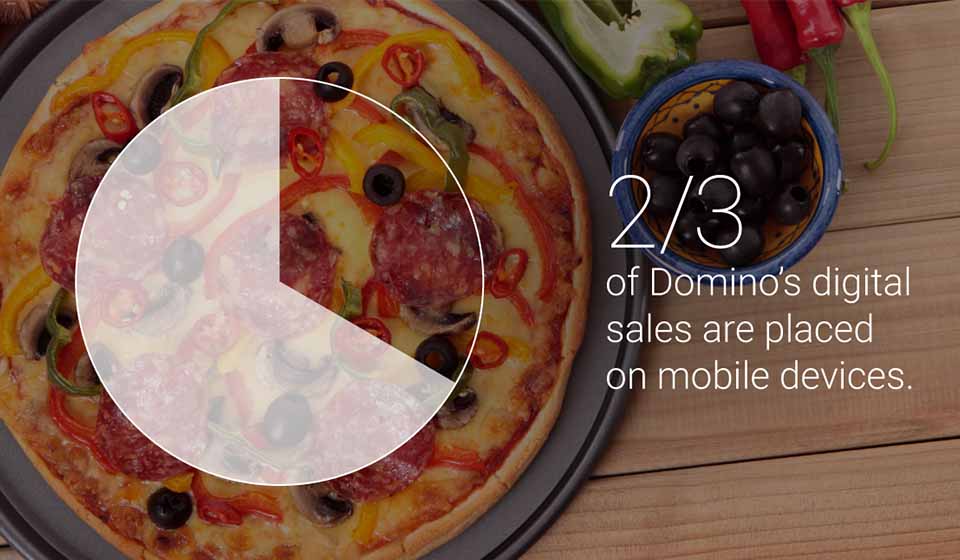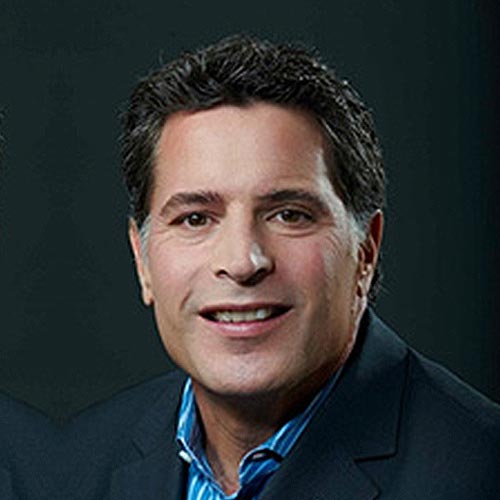WALTER ISAACSON: The year is 2009. The place, the back kitchen of a restaurant in Conover, North Carolina. Two uniformed employees are goofing around. Both of them are in their early 30s, but they’re so giddy, they feel at least 10 years younger. From the outside, it looks like they’re trying to impress each other, even slightly flirtatious. The woman thinks the man looks like a movie star, and he’s not complaining at all about the attention. They joke around with each other, laugh, and then return to the task at hand, preparing food orders that are headed out for delivery. And that’s when things begin to get gross.
The man takes a strand of shredded cheese in his hand, holds it between two of his fingers, and sticks it in his nose. And then he pulls it out and places it on the sandwich. The whole spectacle is absolutely disgusting, but the woman doesn’t think so. She thinks it’s hilarious. They continue. Their actions continue to get grosser. And it’s all accompanied by a running play by play from an admiring audience of one. Had the story ended there, it might have become one of those urban legends of the food industry, one of those stories you hear about but can’t really believe or verify. But this one was to be believed, because what happened next was a truly amazing example of what can only be described as extremely poor judgment.
Rather than make this disturbing moment just a thing between two coworkers, the woman decides to record it. And then she puts it online, on YouTube. And you can guess how this one turned out. Within 24 hours, the video went viral, being viewed almost a million times. This type of exposure is any company’s worst nightmare. No one wants their brand associated with something as disgusting as this. It has the potential to sink a brand, and it certainly may have sunk this one. But it took the foresight of a brand new CEO and some incredible enterprising uses of technology to pivot this company out of the gutter.
I’m Walter Isaacson, and you’re listening to Trailblazers, an original podcast from Dell Technologies.
[MUSIC PLAYING]
SPEAKER 1: There’s no denying that people like to eat.
SPEAKER 2: The cook is anticipating every gastronomical whim.
SPEAKER 3: Many fine old recipes have been streamlined for modern use.
SPEAKER 4: Speed and economy prevail.
SPEAKER 5: Doesn’t it taste good?
[MUSIC PLAYING]
WALTER ISAACSON: Takeout food has become a major part of how we feed ourselves as a species. Look around almost any major city in the world today, and you’ll see a seemingly endless barrage of takeout options. On this episode of Trailblazers, we’re talking all about the takeout food industry and how digital technology has revolutionized this industry to its very core. But before we look at where we are today, we need to go back, and learn how we got here. It’s a story that goes back more than 2000 years, to the bustling streets of Pompeii.
Kitchens in Pompeii were the domain of the upper class. If you were poor, your home didn’t have one. Instead, you ate at one of the first known versions of the takeout restaurant, one of Pompeii’s many thermopolia shops. The shops were mainly small rooms with counters built in the front. And embedded in those counters were earthenware jars that were filled with all sorts of food, all available for purchase. It was fast food before there was even a term for it.
And if we fast forward to some less ancient history, we find ourselves in New York City. In the 18th century, hotels took out ads that read, in not so catchy prose, quote, “Families may every day be provided with plates of any dish that may happen to be cooked that day by sending their servants for the same.” But it wasn’t until the 1920s that technology and the restaurant industry first clashed, creating the restaurant industry’s first major technological disruption. The disruptor that shook the industry, the automobile.
The car’s impact was felt throughout restaurants all across America, as the concept of the road trip suddenly took off. Rather than eating, Americans were suddenly spending their leisure time driving, driving on vacations or just for lazy Sunday drives in the country. And with all this driving came a craving for food that could travel with people on their adventures. And so the boxed lunch industry was born.
America’s love with takeout was also driven by the Industrial Revolution. Innovations in manufacturing and production processes meant that huge numbers of people were finding work in factories and on job sites farther and farther away from their homes. And to serve these workers who wanted to grab a bite on the job, small restaurants and food stands popped up everywhere. Takeout was particularly big in New York City, where one of the most popular food choices was oysters. At this point, the Hudson River was still full of edible sea creatures. And not only were they plentiful, but they were cheap. Those boxes of goodies from the sea could be taken out for lunch or back home for a convenient dinner from the city.
Despite all this changing behavior, the takeout trade was still small potatoes compared to the traditional dine-in restaurants. But after the Second World War, and again thanks to technology, things once again shifted. There was another disruptor afoot, and this time the impact was massive and unavoidable. The disruptor this time, television. Prior to television’s introduction, going out to a restaurant wasn’t only about sustenance. It was also a form of entertainment. But with the growing popularity of television, people suddenly didn’t need to leave their houses in order to be entertained. Writer and food historian Emelyn Rude.
EMELYN RUDE: Television didn’t really change how people thought about restaurants. It basically just sucked up all of their time. It was a new entertainment. You went to a restaurant to be entertained, to have a good night out. And television now was that new thing, and everyone watched television. The restaurant industry, it really hurt their bottom line. People– a lot of restaurants actually closed in the advent of TV, because they just couldn’t compete with this new novel, really cheap technology that was in everybody’s homes.
WALTER ISAACSON: Restaurants saw their profits start to decline. So many restaurants entered the business of take home meals. For the first time, anything that could be eaten in the restaurant could also be taken home. This may be something we take for granted today, but in the 1950s, this was a huge shift. The concept of takeout food exploded. Emelyn Rude.
EMELYN RUDE: In response, people came up with the idea, if everyone’s going to be watching TV anyway, why don’t we just feed them while they’re doing it? It will not only help our sales, it will also help them I guess watch more TV, because they don’t have to cook anymore. And so in direct response, restaurants around the United States started offering television menus, is what they were called. And so you would call in, or you’d visit the restaurant. They’d have it ready to go, hot piping, and you’d take it home and eat it in front of the boob tube.
WALTER ISAACSON: And amongst the most popular takeout items in this boom time, Chinese food. At least the sweeter, more deep fried version of Chinese food that can be found in restaurants across America. Also popular was another culinary immigrant to the state. This one, a cheesy, crusty meal, something that went by the funny sounding name pizza. Emelyn Rude.
EMELYN RUDE: Pizza only became popular in the United States after World War II, when US troops stationed in Italy on the front there came back and were raving about how amazing Italian food is. Italians had been in the United States for almost a century, at this point. But they faced a lot of discrimination, and Little Italy’s throughout the United States weren’t really places people patronized all that much. But then all of a sudden, all of these troops were raving about pizza and pasta and all these incredible foods. And so it became hip, all of a sudden, to eat pizza. And today, one in every eight Americans eats pizza every day, which is a lot. WALTER ISAACSON: The adoption of pizza as a takeout staple definitely helped in the feeding of a nation that had suddenly become seduced by television. But it was pizza’s next move that would seal its place in history as one of the staples of the American diet. It was something that was send shock waves through the entire restaurant industry. Why go out for pizza when pizza could come to you?
Two of the pioneers of home delivery were legendary Hollywood restaurateurs Patsy and Franklyn D’Amore. In 1939, these brothers moved from Brooklyn to their new home in LA. There they opened up a restaurant full of Italian flavors. And the highlight of their menu, pizza. Franklyn was a vaudeville performer. And on one of his trips to LA, he noticed that pizza didn’t exist there yet. To Franklyn, this spelled opportunity. So he and his brother traveled across the country, where they opened the first pizzeria in Los Angeles. And it was a hit. Celebrities flocked to Casa D’Amore, including the likes of Frank Sinatra, Dean Martin, Joe DiMaggio, and Tommy Dorsey.
In the early 1950s, they introduced a new feature to their menu. As long as your order was a minimum of $2.50, you could get free delivery right to your door. And in finding an innovative answer to the disruption of television, home delivery was born.
Fast forward to the 1990s. The internet had begun to take its hold on the world. Smart businesses knew that not only was home delivery still important, but in this new age, there were opportunities online that they needed to take advantage of in order to compete. A press release from 1994 read, quote, “In a revolutionary spin on business use of the information superhighway, the Santa Cruz operation and Pizza Hut today announce PizzaNet, a pilot program that enables computer users for the first time to electronically order pizza delivery from their local Pizza Hut restaurant via the world wide internet.” The importance of this cannot be overstated, because, according to Pizza Hut, it was on PizzaNet where the very first physical good was sold on the internet.
Before customers could purchase books or clothes online, they could order a pizza. And that first pizza order, a large pie with pepperoni, mushrooms, and extra cheese, marked the beginning of a revolution. Soon, others copied Pizza Hut’s lead. But while many restaurants eventually went online in one form or another, not all saw the value in online ordering. That paved the way for yet another disruption. And 10 years after Pizza Hut’s first online pizza order, the world of takeout was rocked once again, this time by two software developers named Matt Maloney and Mike Evans.
The pair was working as developers for the web site apartments.com. One day, while working, the two began grumbling about the frustration they felt while ordering food. First there was the hassle of paper menus. They were never around when you needed them. Then there was the inconvenience of digging into your wallet and reading out your credit card number every time you ordered. The developers were spending their days working on a geographic search engine for apartment rentals. And that’s when a light bulb went off. Why couldn’t this same sort of thing work for food delivery?
The two developers collected hundreds of menus from restaurants in their Chicago neighborhood. Their first idea was to charge restaurants $140 for six months of premium placement on their website. But the restaurants balked at the idea. Most already had websites, and the idea of paying to be part of another web site seemed like a waste of money. Then, another idea struck them. Instead of charging a fee to be featured on the web site, they could charge a commission instead. Of 10% commission on every sale. This no-risk proposition was a win-win, and restaurants signed on in droves. They called their online ordering service GrubHub. And after their first success in Chicago, the company eventually merged with Seamless, a similar ordering service that was taking off in New York. Stronger together, they realized that not only were they on to something, but it was something that was incredibly scalable. So scalable, in fact, that they eventually expanded to 700 cities, with 30,000 restaurants participating.
Neal Ungerleider covers emerging technologies as a reporter for Fast Company. NEAL UNGERLEIDER: I’ll probably get in trouble for saying this, but I’d say the relationship between restaurants and delivery platforms are frenemies almost. The restaurants need these delivery apps, because customers love the convenience of ordering through their phone or through their computer. But for restaurants, which are working on very, very thin profit margins, the commissions that they have to hand over to these platforms in exchange for operating on them is a huge problem. You also have the cost of setting up computers, and, in some cases, even a reputational cost to the restaurant. If something goes wrong with Seamless, and their delivery person is late, or their app is down, the customer will not order from that restaurant again. Even though it’s not their fault, the restaurant still deals with the fallout from the diner. And for a lot of these smaller places, this is a huge issue they deal with. WALTER ISAACSON: And no other industry was threatened more by these upstarts than big pizza. They were feeling threatened by anyone else gunning for a piece of the pie, so to speak. The threat of digital startups, mixed with the economic realities of the market crash of 2008, meant that large pizza chains across America were struggling. And perhaps none more than Domino’s.
In April 2009, Domino’s stock was just over $7 a share. Only two years earlier, it had been $33. And just when it seemed like things couldn’t get any worse, they did, when two of its staff members decided to shoot a video of themselves goofing around in the back kitchen of Domino’s, doing all sorts of gross things to the food. And then, they uploaded it onto the internet.
There’s never a great time for a company to have a PR crisis, but for Domino’s, the timing couldn’t have been worse. A customer survey had just been released that year documenting consumer taste preferences among national brands. It revealed that Domino’s was tied, along with Chuck E Cheese, for last place. In 2010, Domino’s appointed a new CEO, a man by the name of J. Patrick Doyle. Doyle had been with the company for 13 years, and he knew that his number one priority was to change public perceptions about the company and its product. Bill Taylor is the author of the new book “Simply Brilliant, How Great Organizations Do Ordinary Things In Extraordinary Ways.”
BILL TAYLOR: By the time he took over in March of 2010, it had been this brand that had been around literally for 50 years, still a very powerful presence in the marketplace. But customers are by and large not very happy with the product. Growth had slowed to a crawl. The stock price was down. Nobody was excited by Dom– it was that kind of the definition of mediocrity of product, a company whose strategy had kind of run out of gas. And it was truly ripe for reinvention and transformation. And Patrick was the guy who unleashed that.
WALTER ISAACSON: Looking around at the company that he inherited, Doyle knew that he had to do something bold. The first thing he did was launch an ad campaign, featuring focus group participants talking about what they really thought of their pizza. It wasn’t flattering. Doyle also appeared in the ad, accepting the criticism and promising to do better. And if that was considered a bold move, then the next thing he did was truly unprecedented. Bill Taylor.
BILL TAYLOR: So this is the part of the Domino’s story that struck me more than anything, when he simply declared for all to hear, we no longer think of ourselves as a pizza company. We think of ourselves as a technology company. I said, excuse me? Well, turns out, they’re headquartered in Ann Arbor, Michigan. They’ve got 800 people working in headquarters. Fully 400 of those, half of their headquarters employees, are engaged in software analytics and big data. They really– once they finally got the product right, they really are, from this point going forward, as much a technology company as they are a food company. And many of the initiatives have to do with making it as easy, as convenient, as kind of natural and impulsive almost to order Domino’s, much more so than any other pizza company.
So it began very early on with the Domino’s smartphone app. They then went to the capacity to order a Domino’s over text messaging. Now you can literally tweet an emoji of a pepperoni pizza, and a pepperoni pizza will appear at your doorstep within 30 minutes. You can order it through Facebook messaging. They’re simply saying to themselves, we understand that a big piece of our customer base are young people, millennials, or what have you. And he knows where those people are and where they’re spending their time, and that capacity while you’re on Facebook to simply go over to Messenger and pop in an order or while you’re sitting there, you know, tweeting out various things to also tweet out a Domino’s emoji, because you’ve pre-registered, it’s really a very powerful thing.
[FACEBOOK POP]
WALTER ISAACSON: Doyle had in effect managed to disrupt his company’s way of operating, as well as the whole takeout and delivery industry by putting a renewed focus on digital technology. They were no longer a food company. Instead, they were transforming themselves into a technology company, one that also happened to deliver pizza, a huge culture shift for a company that had already been around for 50 years.
And it wasn’t something they did quietly, either. The company trumpeted its advancements, something that not only helped the flow of their business, but also helped their bottom line. Today, that same stock that was worth just over $7 a share in 2009 is worth around $180 a share. And that’s largely thanks to Doyle’s digital disruption of his own company. Peter Nowak is a technology journalist and author of the book “Sex, Bombs, and Burgers, How War, Porn, and Fast Food Shaped Modern Technology.”
PETER NOWAK: Pizza chains are also very big into the digital technology. Domino’s especially has been a company that’s– they’ve actually tried to label themselves as a technology company, as opposed to a pizza company. Whether you buy that or not is up to you, but Domino’s has been basically experimenting with every kind of technology that’s come around.
WALTER ISAACSON: Domino’s changed the customer experience. But more than that, Doyle has given every aspect of their company a digital overhaul. They’re even hard at work on how that pizza gets to your front door. In New Zealand, Domino’s has a special R&D department, where they’ve been experimenting with robotic delivery and delivery by flying drones—
[BEES BUZZING]
WALTER ISAACSON: –something that in theory may have an impact on how pizzas are delivered sometime in the distant future. But perhaps more importantly, it’s something that is having a quantifiable impact on the present, an impact on how people see Domino’s, a forward looking company that is willing to take chances. Bill Taylor.
BILL TAYLOR: To me, their transformation is not unlike the transformation of Netflix, where five or six years ago it was all about sending physical DVDs through the mail, and now it’s all about a streaming service. Three or four years ago, the huge majority of Domino’s orders came over the telephone, and that was just the most traditional thing. Now, the huge majority of Domino’s orders come through smartphone and social media apps. There really is a kind of step function change in how people order pizza.
WALTER ISAACSON: It’s been a remarkable transformation. And what’s most amazing about it is that at the end of the day, no matter how we think about it, the physical product is still a pizza. But through the use of digital technology, the experience of that pizza has become totally transformed. Bill Taylor.
BILL TAYLOR: The questions that Patrick Doyle asked himself, what makes us really distinctive? What can we do in our business that people simply can’t or won’t do or aren’t prepared to do? How do we look at the power of technology, not just to make everything we do more efficient, although that’s important, but to make ourselves a more memorable brand to encounter? And, you know, the funny thing was, the reason, as a leader and as a person, he has been so successful is because he thinks so deeply about why people in business are so afraid of failure. And in fact, that was to me the most eye-opening lesson, because he basically said, the only reason we were able to have all those successes is because we figured out as an organization how to get more comfortable with failure. You can’t learn new things unless you’re prepared to fail. You can’t try new things. You can’t– there is no innovation without having the capacity to tolerate failure.
WALTER ISAACSON: And perhaps it’s that willingness to fail that separates the great disruptors of our digital age from the corporate dinosaurs who have fallen, unable to evolve with the changing times. It’s a risky venture, but when done right, it can clearly turn out to be a pretty tasty meal in itself.
I’m Walter Isaacson, and you’ve been listening to Trailblazers, an original podcast from Dell Technologies. If you want to find out more about the ways the world of takeout and delivery has been disrupted, be sure to visit delltechnologies.com/trailblazers3. That’s trailblazers, then the number three. And next episode, we’ll be looking at the weird world of video games and the characters, both on and off the screens, who have made this industry the multibillion dollar business that it is today. And you can subscribe to this show in iTunes or wherever you get your podcasts. And if you like, please leave us a rating and review. We’d appreciate it. Thanks for listening.
[MUSIC PLAYING]
 Takeout is as American as the automobile – and the two are inextricably linked, for as people started to take road trips and work farther from home, they needed food that could travel with them. From box lunches to oysters, small restaurants and food stands popped up everywhere. After WWII, with American soldiers returning home raving about this disc-shaped wonder they discovered in Italy, pizza became a popular and convenient choice. Today, one in eight Americans eat pizza daily.
Takeout is as American as the automobile – and the two are inextricably linked, for as people started to take road trips and work farther from home, they needed food that could travel with them. From box lunches to oysters, small restaurants and food stands popped up everywhere. After WWII, with American soldiers returning home raving about this disc-shaped wonder they discovered in Italy, pizza became a popular and convenient choice. Today, one in eight Americans eat pizza daily. Emelyn Rude
Is a food writer and food historian and the author of Tastes Like Chicken: a History of America's Favorite Bird.
Emelyn Rude
Is a food writer and food historian and the author of Tastes Like Chicken: a History of America's Favorite Bird.
 Neil Ungerleider
Is a Los Angeles based journalist, writer, and consultant. He reports for Fast Company magazine, covering emerging technologies.
Neil Ungerleider
Is a Los Angeles based journalist, writer, and consultant. He reports for Fast Company magazine, covering emerging technologies.
 Bill Taylor
Is the co-founder and founding editor of Fast Company magazine and author of Simply Brilliant: How Great Organizations Do Ordinary Things in Extraordinary Ways.
Bill Taylor
Is the co-founder and founding editor of Fast Company magazine and author of Simply Brilliant: How Great Organizations Do Ordinary Things in Extraordinary Ways.
 Peter Nowak
Is a technology journalist, syndicated blogger and author of Sex, Bombs, and Burgers: How War, Porn, and Fast Food Shaped Modern Technology as We Know It.
Peter Nowak
Is a technology journalist, syndicated blogger and author of Sex, Bombs, and Burgers: How War, Porn, and Fast Food Shaped Modern Technology as We Know It.